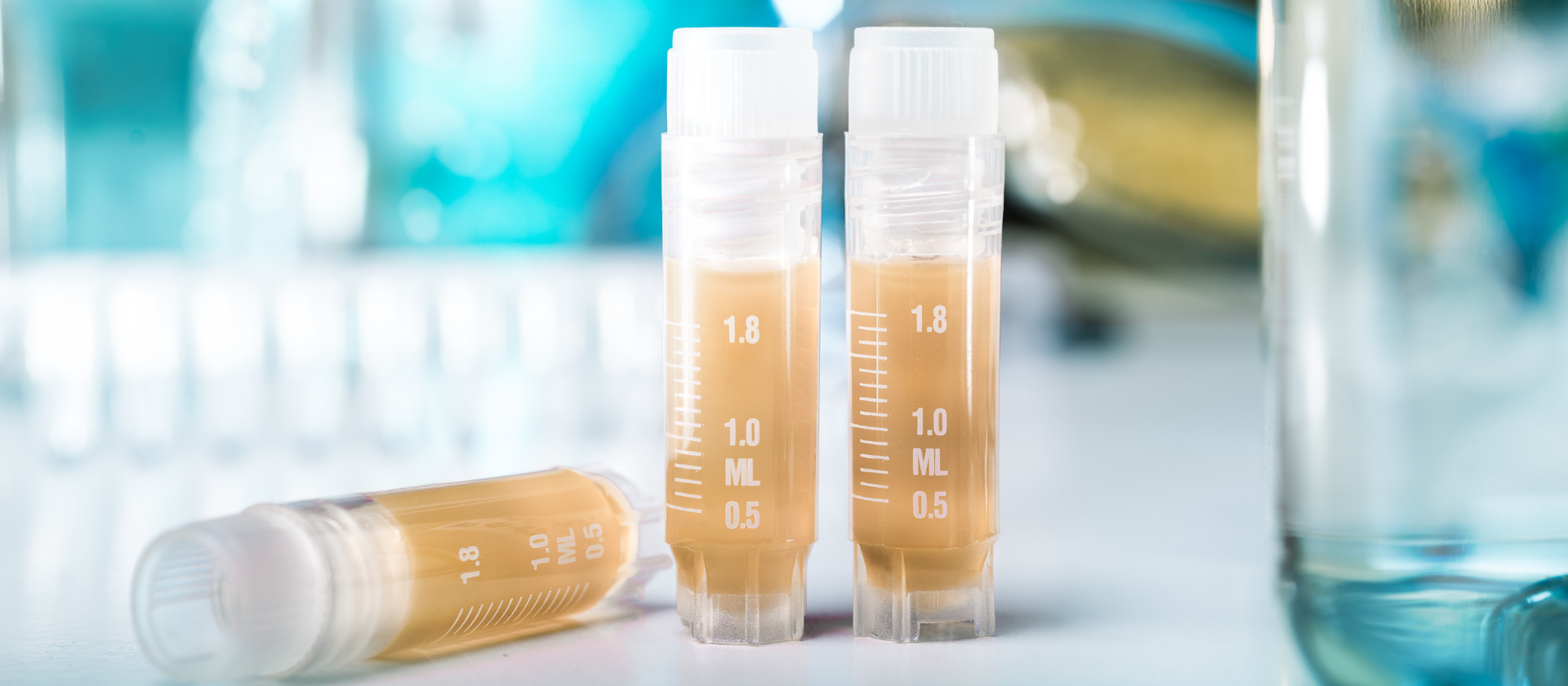Thawing Cryo-vials in a Bead Bath
When thawing cryopreserved cells, time is the most important factor. In general, cells must thaw quickly. As a culture freezes, ice is formed. Upon thawing, these ice shards can puncture cells, thus decreasing viable cell dens.

Concerns when using a Bead Bath or a Water Bath
Bead Baths
Cryo-vials thaw more slowly in a Bead Bath than in a water bath. This can potentially compromise cell viability.
Water Baths
When using a water bath, cryo-vials are typically dipped into 37 ºC water and gently shaken about. During this process, water can wick underneath the cryo-vial's lid and exposure the sample to water-borne biological and chemical contaminants.
How to Resolve
Create a Cryo-Thaw Bead Chamber
Here's how you create a Bead Chamber to thaw a cryo-vial quickly and safely:
Simply scoop out beads from the bottom of your 37 ºC Bead Bath to fill a 100-300 ml container, preferably a cylindrical container with a lid (Fig. 1). The beads at the bottom of your bead bath should have a slightly raised temperature of around 40 ºC. Once filled, insert the frozen cryo-vial into the bead filled container and cap it tightly. Gently shake the canister by rotating it back and forth in your hand for approximately 1- 1.5 minutes. At this point, most of the ice in the vial will have melted and you may choose to transfer the vial to your 37 ºC Bead Bath or allow the canister to rest in the Bead Bath or on the bench top until use. To retrieve the vial, carefully pour out the contents of the Bead Chamber back into your bead bath. Note - as an alternative to scooping out beads each time you wish to thaw cells, simply keep a metal canister (or glass, or something heat resistant) filled with beads, in the base of the bath at all times.
Temperature Optimization (Optional)
You may want to optimize the initial temperature of the beads so that the final temperature of the beads (after one minute of shaking with the inserted frozen cryo-vial) is the ideal incubation temperature for your sample (e.g. 37ºC). For instance, if after shaking the cryo-vial for 1 minute, you find the temperature of the beads to be too low (33ºC), start with warmer beads; if the temperature of the beads is too high (40ºC), start with cooler beads. You can adjust the temperature of the Bead Chamber to best fit your experimental needs.
The Optimization Procedure
Below is an example optimization procedure for thawing a frozen 1 mL sample vial to the point where the ice just disappears.
Setup
- 1 mL Water in Standard Microfuge Tube at -20 ºC
- Aluminum Canister with Lid ~ 2" x 3"diameter (~200 mL) filled with Bath Armor Beads warmed to 41ºC.
Procedure
- Frozen Microfuge Tube was inserted into the bead-filled canister; lid was screwed on and secured.
- Canister containing the Microfuge Tube was rotated back and forth in hand for 1 minute.
- Canister lid was removed and the temperature of the Bead Chamber was recorded.
- Contents of the canister were slowly poured out into the Bead Bath to retrieve the microfuge tube.
- The sample was visually analyzed for the presence of ice.
Results
- Final temperature of the Bead Chamber was 37.5 ºC.
- No visible ice shards were remaining in the microfuge tube.
As always, be sure to validate the protocol and to keep the conditions constant from experiment to experiment.
Fig 1. Example of a cylindrical container. Standard 200 mL aluminum canister.











